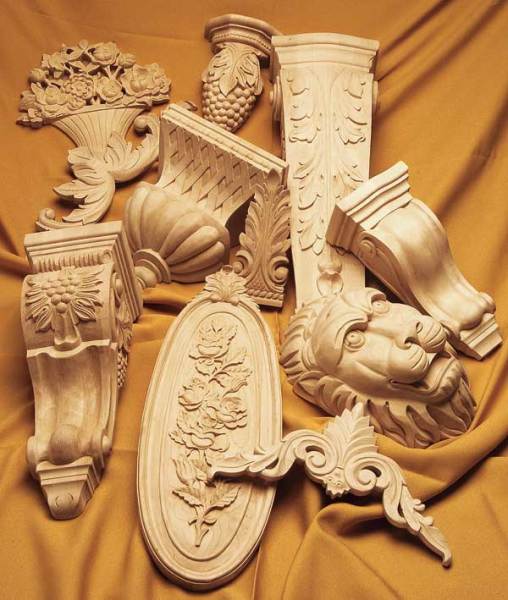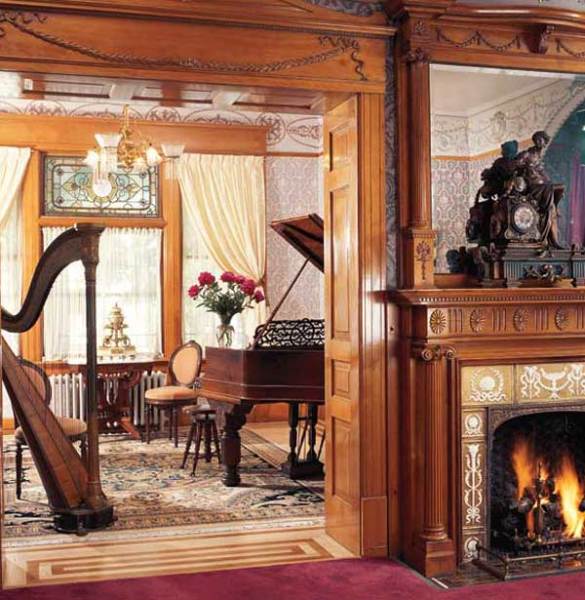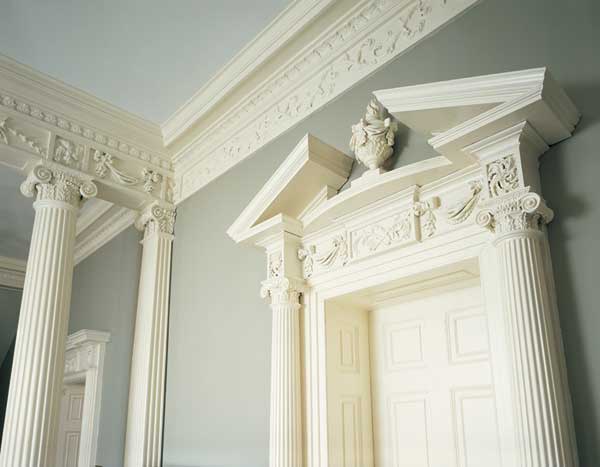
A sample of wood carvings available from If your home’s decorative details have been lost to remuddling, or if you’d just like to dress up your plain Jane a little, you’re in luck—today’s market offers everything from traditional cast plaster to durable synthetic reproductions at price points that should suit every budget. In use in American homes since the 18th century, plaster is the gold standard for those demanding historical authenticity. Companies like Fischer & Jirouch and Boston Ornament Co. handcraft this versatile material in a process that is virtually unchanged from that time to this, using gypsum and lime that’s mixed with water, then cured in molds. Plaster is prized for its ability to take detail—ideal for that ornate ceiling medallion or intricate frieze—and can be cast, stamped, or modeled. It also doesn’t shrink or warp. Plaster does, however, require a certain amount of craftsmanship to install. The material can also be heavy. [caption]JP Weaver is known for its flexible “Petitsin” ornament.
Another traditional product for decorative effects is composition ornament, or “compo.” Oil, resin, chalk or whiting, and animal glue comprise the basic recipe for this centuries-old alternative to more expensive plaster, carved wood, or stone. Its manufacture takes place in three stages, each capable of producing a different effect. Heated liquid ingredients combine to form a “dough” that is initially pliable. At this point, the compo can be modeled by a skilled craftsman or more commonly, pressed into a mold where it accepts fine detail. When it reaches its second, “gelled” stage, the detail is set but the material is still flexible and can be manipulated without cracking. In its final stage, compo is hard as stone, and can be carved like wood. JP Weaver specializes in pliable compo ornament, while Decorator’s Supply Company carries an extensive line of applied compo, including woodwork ornament and moldings.

An 1883 home with hand-carved wood. Most of the ornament can be custom replicated, or may even be in stock. (Photo: Jessie Walker)
For many homeowners, nothing compares to wood for decorating walls and ceilings. It is both durable and versatile: it can be cut, carved, painted, varnished, or stained, and is suitable for everything from onlays to columns and capitals. Another plus is its grain and color, which gives it a depth of aesthetic appeal that other trim materials do not possess. Wood excels as a paneling medium, adding instant history to a room. While specialists like Maurer & Shepherd Joyners and Maple Grove Restorations build wood paneling the traditional way, wainscot paneling systems by companies like New England Classic Interiors and Elite Trimworks can be a less expensive way to get a similar look.
Unlike plaster or compo, wood is subject to weather-related shrinkage and swelling. And like plaster, it can be challenging to work with, in many cases requiring a professional hand. Yet also like plaster, it is unquestionably authentic.

Real plaster is still a good option. (Photo: Paul Rocheleau)
For situations where ease of care or installation are paramount, high-density polyurethanes are an economical, low-maintenance alternative to traditional forms of ornament. While proprietary systems differ, most of these synthetics are made from a liquid urethane poured into a mold and then sealed. The material expands under pressure to fill the mold and duplicate crisp detail.
A layered polyurethane molding can be cast in a single piece, but it does require painting. Its cutting and milling properties are often compared to pine, and because the material is water repellent, it can be used in place of exterior millwork as well. Although lightweight, it is softer than either wood or plaster. It is usually the most economical and speedy alternative—especially if you want to add a bit of glamour in the form of a ceiling medallion or decorative corbels as a weekend project. A word to the wise, though: if your new ornament will be seen close up, buy the finest quality material you can afford.







